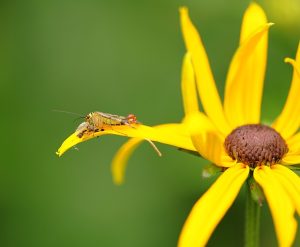Residents and visitors in the Catalina Foothills near Tucson should be aware of the prevalence of venomous scorpions, particularly the Arizona bark scorpion (Centruroides limbatus) and the bark scorpion (Centruroides sculpturatus). These species are common due to the area's arid climate and vegetation. To manage scorpion populations effectively and ensure safety, it is recommended to maintain a clean environment, seal home entries, remove yard debris, and employ preventive measures such as sealing foundation cracks, installing door sweeps, and using window screens. For comprehensive control, regular services from scorpion control experts in Tucson are essential, as they offer local knowledge and professional techniques that align with the best practices for managing these creatures. Scorpion control Tucson measures are particularly important because these arachnids are adept climbers and often invade human spaces. The stripe-tail scorpion, while less aggressive and larger, also requires attention in scorpion control strategies due to its ability to coexist with other pests and contribute to their populations. By understanding the behavior and habitats of these species, residents and professionals can collaborate to reduce encounters and stings, thereby creating a safer living environment in Tucson.
In the Catalina Foothills of Tucson, Arizona, the natural landscape offers a unique tapestry that includes a variety of scorpion species. This article serves as a comprehensive guide to understanding the common scorpions in the area and the importance of effective scorpion control measures within Tucson homes. With an emphasis on species identification, habitats, behavior patterns, and preventative strategies, residents can learn how to safeguard their living spaces against these arachnids. As we navigate through the characteristics of the Arizona Bark Scorpion (Centruroides aztecus), Nevada Bark Scorpion (Centruroides exilicauda), and various Stripe-tail Scorpions (Vaejovis spp.), it becomes clear that scorpion control Tucson is not just a matter of pest management but a critical aspect of home safety due to the risks associated with their stings. This overview also highlights the role of professional pest management and the importance of long-term strategies for an environment where these creatures are part of the ecosystem.
- Common Scorpion Species of Catalina Foothills: An Overview for Effective Scorpion Control in Tucson
- – Sub-headings might include:
Common Scorpion Species of Catalina Foothills: An Overview for Effective Scorpion Control in Tucson

Residents and visitors to the Catalina Foothills near Tucson, Arizona, often encounter scorpions due to the region’s arid climate and vegetation. Among the most prevalent species are the bark scorpion, Centruroides sculpturatus, and the Arizona bark scorpion, Centruroides limbatus. These creatures are not only a common sight but also a subject of concern for effective scorpion control in Tucson. Bark scorpions, particularly the Arizona bark scorpion, are known for their venomous sting which can be harmful to humans and pets. Their ability to climb and inhabit structures makes them a persistent challenge in urban environments.
Effective scorpion control in Tucson requires understanding the behavior and habitat preferences of these species. Bark scorpions seek cool, dark places during the day, often hiding under rocks, logs, or within homes. They are nocturnal, becoming active at night to hunt for food. To mitigate scorpion infestations, residents should maintain clean, well-sealed living spaces and keep yards free of debris where scorpions could hide. Additionally, sealing cracks and gaps in home foundations, using door sweeps, and installing window screens can significantly reduce scorpion access. Regular pest control services that specialize in scorpion management are also recommended for maintaining a scorpion-free environment in the Catalina Foothills. These measures, combined with the expertise of local scorpion control professionals in Tucson, offer the most effective approach to managing these creatures and ensuring safety for all residents.
– Sub-headings might include:

In the Catalina Foothills, a diverse range of common scorpion species can be found, with the most prevalent being the Arizona bark scorpion, centering the focus of effective scorpion control measures in Tucson. This small but formidable arachnid is known for its aggressive nature and ability to climb, often leading to encounters with human residents. Its yellowish-brown color and distinct dark stripes down the center of its back make it easily recognizable. The Arizona bark scorpion’s tendency to seek refuge in dark, sheltered places, such as homes, garages, and sheds, necessitates proactive scorpion control strategies to safeguard both property and public health.
Another notable species is the stripe-tail scorpion, which, while less aggressive than its Arizona counterpart, can still pose a stinging risk. This species is larger in size and prefers more open areas like deserts and grasslands. Its diet primarily consists of insects and other arthropods, contributing to its role as an indirect indicator of pest activity levels. Effective scorpion control in Tucson requires understanding the habits of these creatures, including their food sources and preferred habitats. This knowledge enables residents and pest management professionals to implement targeted strategies to reduce populations and mitigate the risk of scorpion stings, thereby maintaining a comfortable and safe living environment.
In conclusion, the Catalina Foothills region near Tucson is home to a variety of common scorpion species, each with its unique characteristics and behaviors. Understanding these species through thorough research, as outlined in this article, is crucial for effective scorpion control in Tucson. By recognizing the different types of scorpions present and implementing targeted strategies for prevention and management, residents can significantly reduce the risk of encounters with these arachnids. It is through informed actions that Tucson’s community can coexist harmoniously with its native fauna, ensuring a safer environment for all.
